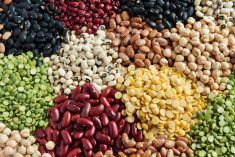Glacier Farm Media | MarketsFarm – As the Canadian canola industry remained braced for whatever may come from China in regard to tariffs, a sharp blow to the oilseed arose from a much different source. United States President-elect Donald Trump threatened Canada and Mexico with 25 per cent tariffs on their goods imported by the U.S. effective Jan. 20, the day he’s sworn in.
Trump announced his grand scheme over social media on Nov. 25, and the next day canola futures took an immediate tumble. Although calmer heads in the trade helped prices recover somewhat, the following day saw sharper declines. In two days, the January canola contract lost C$28.40, as it fell to C$564.60 per tonne.
Read Also

U.S. livestock: Feeder cattle hit contract highs on tight supply
Chicago | Reuters – All Chicago Mercantile Exchange feeder cattle futures and most live cattle futures hit contract highs on…
“This is such a complicated mess now,” commented broker Ken Ball of Ventum Financial in Winnipeg.
He pointed to Canada’s canola oil exports, of which the U.S. is the biggest buyer as it helps to feed that country’s burgeoning biofuel industry.
“But because the U.S. biofuel blending credit has to be renewed by early January, there are some concerns the Trump administration may not (keep it),” Ball warned.
However, he said a massive lobbying effort has been underway trying to convince the incoming administration to keep the tax credit as almost all of the biofuel plants are located in the heavily pro-Trump U.S. Midwest. As well, there are efforts to obtain an exemption for Canadian canola from Trump’s tariff plans.
Ball stressed the path that canola follows going into 2025 will be very dependent on what happens to soyoil futures on the Chicago Board of Trade. In turn, that will be largely determined by the future of the tax credit program for U.S. biofuels.
He said if those credits are lost and canola oil exports take a hit, they will eventually recover as the global demand is there to pick up the slack. The catch being transportation costs would likely triple to get that oil overseas and that would mean reduced canola prices.
In the meantime, Ball suggested canola could get something of a bounce out of Statistic Canada’s principal field crop report on Dec. 5. He said the trade pegged the country’s canola harvest at 17 million to 18.5 million tonnes, down from the 18.98 million StatCan estimated in September.
Should canola come in significantly lower, Ball said given the pace of the oilseed’s exports and domestic crush there could be price rationing by spring. But Ball remained skeptical of StatCan’s accuracy with its satellite-model reports and its farmer survey report, which have seen notable revisions later on.

















